Introduction to anatomy & physiology
swaraj barik
#poet #writer I live with pride and self-respect.Writing is not my profession but my addiction . Medical Consultant,NursingStaff onlinemedical tutor
To know about anatomy & physiology
Introduction to Anatomy and Physiology
Anatomy and physiology are two fundamental branches of biological sciences that help us understand the structure and function of living organisms. While anatomy focuses on the physical structure of organisms, physiology explains how these structures function and interact. Together, they form the foundation for medical and health sciences.
1. Anatomy: The Study of Structure
Anatomy is the branch of biology that studies the structure and organization of living beings. It comes from the Greek word “Anatemnein”, meaning "to cut apart", referring to the dissection techniques used to study body structures.
Types of Anatomy
Human Anatomy – Studies the structure of the human body.
Zootomy – Focuses on animal anatomy.
Phytotomy – Examines plant anatomy.
Comparative Anatomy – Compares anatomical structures across different species.
Levels of Organization in Anatomy
1. Macroscopic (Gross) Anatomy – Structures visible to the naked eye (e.g., organs, tissues, bones).
2. Microscopic Anatomy – Structures studied under a microscope (e.g., cells, organelles).
2. Anatomical Terminologies
Medical professionals use specific terms to describe body locations and directions accurately. These terminologies are essential in anatomy.
Directional Terms:
1. Dorsal (Back) & Ventral (Front)
Dorsal: Refers to the backside (e.g., spine, shoulder blades).
Ventral: Refers to the front side (e.g., chest, abdomen).
2. Cranial (Head) & Caudal (Tail)
Cranial: Towards the head (e.g., brain, face).
Caudal: Towards the lower end (e.g., feet, legs).
3. Anterior (Front) & Posterior (Back)
Anterior: The front of the body (e.g., chest, face).
Posterior: The back of the body (e.g., spine, shoulder blades).
In quadrupeds: Anterior = Cranial, Posterior = Caudal.
In humans: Anterior = Ventral, Posterior = Dorsal.
4. Superior (Upper) & Inferior (Lower)
Superior: Towards the upper part of the body (e.g., head, shoulders).
Inferior: Towards the lower part (e.g., feet, ankles).
5. Medial (Midline) & Lateral (Away from Midline)
Medial: Closer to the body's midline (e.g., nose is medial to the eyes).
Lateral: Away from the midline (e.g., ears are lateral to the nose).
6. Proximal (Near) & Distal (Far)
Proximal: Closer to the body's center or point of attachment (e.g., shoulders, hips).
Distal: Further away from the body's center (e.g., fingers, toes).
7. Superficial (Surface) & Deep (Internal)
Superficial: Closer to the body’s surface (e.g., skin, hair).
Deep: Further inside the body (e.g., bones, internal organs).
3. Body Planes
Body planes help describe locations and movements in the human body.
1. Sagittal Plane – Divides the body into left and right halves.
Midsagittal Plane: Perfectly equal halves.
Parasagittal Plane: Unequal halves.
2. Coronal (Frontal) Plane – Divides the body into front (anterior) and back (posterior) parts.
3. Transverse (Horizontal) Plane – Divides the body into upper (superior) and lower (inferior) sections.
4. Oblique Plane – A diagonal cut that does not align with the main planes.
4. Muscle Terminology
Tendon: Connects muscles to bones.
Ligament: Connects bones to bones.
Origin: The fixed attachment of a muscle (closer to the midline).
Insertion: The more movable end of a muscle (further from the midline).
5. Body Cavities
The human body has internal spaces called body cavities, which house organs.
Ventral Cavity (Larger Front Cavity)
1. Thoracic Cavity (Chest Area)
Contains: Trachea, lungs, heart, blood vessels, esophagus.
Boundaries: Ribs (sides), diaphragm (bottom).
2. Abdominopelvic Cavity (Lower Torso)
Abdominal Cavity: Stomach, intestines, kidneys, liver, pancreas.
Pelvic Cavity: Urinary bladder, reproductive organs, rectum.
Dorsal Cavity (Back Side)
1. Cranial Cavity – Houses the brain.
2. Vertebral (Spinal) Canal – Contains the spinal cord.
6. Physiology: The Study of Function
Physiology focuses on how different body systems work together to maintain life.
Major Body Systems and Their Functions
1. Nervous System
Central Nervous System (CNS) & Peripheral Nervous System (PNS).
Controls body functions and responses.
2. Musculoskeletal System
Bones, cartilage, tendons, ligaments, and muscles.
Provides structure and movement.
3. Circulatory System
Heart (pumps blood).
Blood Vessels: Arteries, veins, capillaries.
Transports oxygen, nutrients, and waste.
4. Respiratory System
Lungs, trachea, nose, and diaphragm.
Enables gas exchange (oxygen in, carbon dioxide out).
5. Digestive System
Organs: Mouth, stomach, intestines, liver, pancreas.
Breaks down food and absorbs nutrients.
6. Integumentary System
Skin, hair, nails, sweat, and oil glands.
Protects the body and regulates temperature.
7. Urinary System
Kidneys, bladder, ureters, urethra.
Filters waste and maintains fluid balance.
8. Reproductive System
Male: Testes, sperm production.
Female: Ovaries, uterus, egg production.
9. Immune System
White blood cells, lymph nodes, thymus.
Protects against infections and diseases.
10. Endocrine System
Glands: Pituitary, thyroid, adrenal, pancreas.
Produces hormones that regulate body functions.
Conclusion
Understanding anatomy and physiology is crucial for medical and health sciences. Anatomy provides insights into body structures, while physiology explains their functions. Together, they help professionals diagnose diseases, perform surgeries, and improve overall healthcare.
